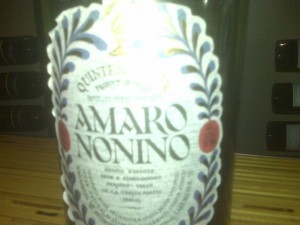Fad Focus 3 – Barrel/Cask Strength
It’s that time again. It’s time for me to highlight another growing fad or trend within the whiskey industry. We’ve discuss rampant peating levels of scotch and the explosion of wood finishes across the industry. Today I want to talk about strength. Not strength of character but rather the alcohol strength at which whiskeys are bottled.The level of alcohol content in a bottle of whiskey is measured in one of two ways. The most straightforward is using “ABV” or “alcohol by volume” measures. If a whiskey states that it is 43% ABV that means that 43% of the liquid content of that bottle at the time of bottling is alcohol. What’s the rest? Mostly water.
“Well then, what’s this ‘proof’ I see on some of the bottle?”
The term “proof” comes from 18th century Great Britain. The idea being that a “proof spirit” was the minimum level of alcohol in a particular spirit that would sustain combustion of gunpowder. The term originated when the rations of rum to sailors were “proofed” by seeing if gunpowder would still light when doused with the rum. This made sure the rum wasn’t watered down. In today’s terms the proof of particular spirits is twice the alcohol by volume. For example, a 90 proof spirit contains 45% ABV.
Originally, whiskey was sold by the barrel. You’d go to your local merchant and fill up your bottles from the barrel. The whiskey you get then was always barrel strength. (Unless the merchant water it down!) Over time distilleries and merchants began bottling the whiskey themselves. For the larger part of the 20th century whiskeys on both sides of the Atlantic were commercially bottled near 40% ABV. Mostly because this was the minimum legal alcohol content allowed if you wanted to call your product whiskey. If you’re trying to maximize your profits then you want the least amount of alcohol in the bottle as possible. That way the alcohol coming out of your barrels will go farther, thus allowing you to sell more bottles and make more money. There were some obvious exceptions to this. Wild Turkey 101 is probably the most well known.
In the last 15 years or so we’ve seen this trend change. More and more bourbon, and scotch distilleries are bottling at higher and higher strengths. They’ve determined that the flavor profile loses something in the process of watering down. This varies by whiskey. Some lend themselves more to higher strengths than others. The most prevalent example in my mind is George T. Stagg. Stagg is an uncut and unfiltered barrel proof bourbon that is part of Buffalo Trace’s annual Antique Collection releases. It’s never hit the bottle at less than 64% ABV. Despite the high alcohol content this stuff is scary smooth. Matt bought a bottle of Stagg for me a few years back and he, my wife, and I dusted off half the bottle that night. It didn’t seem like much at the time but the next morning we were all feeling it.
While Stagg is quite wonderful, if you look at the numbers, it can be pretty scary. The lowest proof release was in 2004 at 129 proof/64.5% ABV. There have been four releases that topped 70% ABV. These were referred to as “Hazmat” releases. They were called this because anything 70% ABV or higher can’t legally be brought on commercial flights and is deemed Hazardous Materials. The Hazmat releases culminated n the 2007 Hazmat IV release. It was bottled at a whopping 144.8 proof/72.4% ABV. That’ll wake you up!
Unfortunately, not all whiskey is George T. Stagg. I’ve found none that are as smooth at that strength. In my opinion, bourbon tends to hold up better at higher proofs than other whiskeys. Scotch, Irish, and Japanese seem too subtle and delicate of flavor and balance in most cases to drink above 50% ABV. So what do you do? You add water. Which really gets us back to the 40% or so ABV that the whiskey used to be bottled at. There’s nothing wrong with bottling at 40% to 43% ABV. Some of my favorite whiskeys are bottled in that range.
There are arguments both ways. On the one hand I like being able to pour something from the bottle and drink it. I don’t like having to monkey around with water to get it to an enjoyable balance. On the other hand, you get more for your money when you buy at higher strengths. The whiskey lasts longer.
Then there are those that want it at cask or barrel proof for the “purity of the spirit”. The easiest example I can think of the Scotch Malt Whisky Society. They buy and store their own barrels and always bottle uncut and unfiltered for their members. More power to them. It’s just not my thing.
It’s really up to you to decide what you prefer. If you like to drink it from the pour like me, then the ever escalating proof can be annoying. If you want the value or the barrel purity then it’s a boon for you. Either way, you should drink, enjoy, and proselytize.
Slainte,
Richard



